Howardena Pindell @ Kettle’s Yard
02 July 2022 – 30 October 2022
'I am an artist. I am not part of a so-called "minority", "new" or "emerging" or a "new audience". These are all terms used to demean, limit, and make people of colour appear to be powerless. We must evolve a new language which empowers us and does not cause us to participate in our own disenfranhisement.'
The words of Howardena Pindell, artist, activist and writer, whose exhibition ‘A New Language’ hits you like a punch to the solar plexus.
As if to confirm the fact that artists of colour do not receive the same attention as white, particularly white male, artists, I have to confess to not having heard of Howardena Pindell before this exhibition. But, then again, the black experience, from slavery, the civil rights era, racism and continued police brutality was never a comfortable topic for the gatekeepers of our Fine Art institutions. This is what Pindell tackles head on.
An abstract artist up to a point, Pindell’s use of text, leaves the viewer with no doubt as to what the intended message of each work is and this of course applies to the video pieces exhibited too.
Below are some of the key works.
‘Untitled’ (1972)
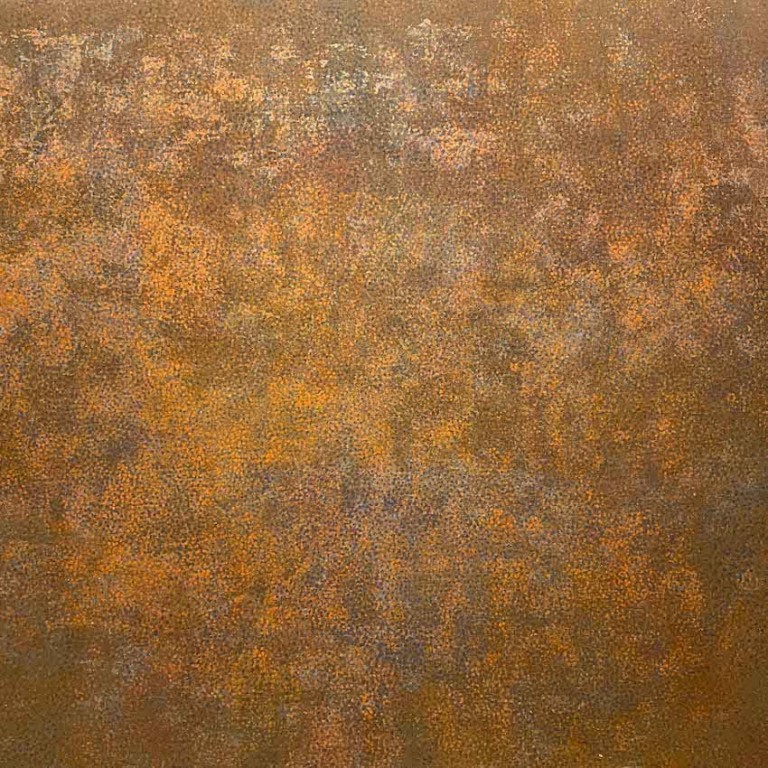
Untitled (1972)
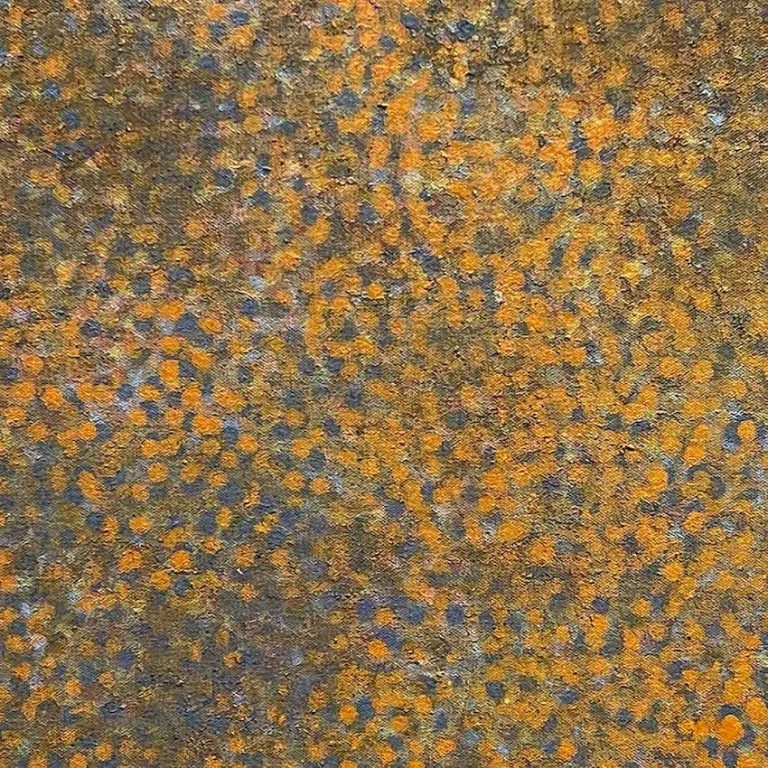
Untitled (1972) detail

Untitled - stencil (1970)
Included here mainly because it signals Pindell’s departure from figurative work to abstract work. A sea of randomised dots sprayed on to a canvas through a homemade stencil of hole-punched strips. Pindell’s colour experiments reference Rothko’s paintings in their subtle build up of colour. Close up, they seem like an exercise in pointillism and even a nod to Monet’s Water Lillies. But knowing what followed in Pindell’s work, these can be seen to represent a homogeneity that is anything but. Beneath the surface you have bubbling under, hints of ‘the other’ and these occasionally burst through.
‘Free, White and 21’ (1980)
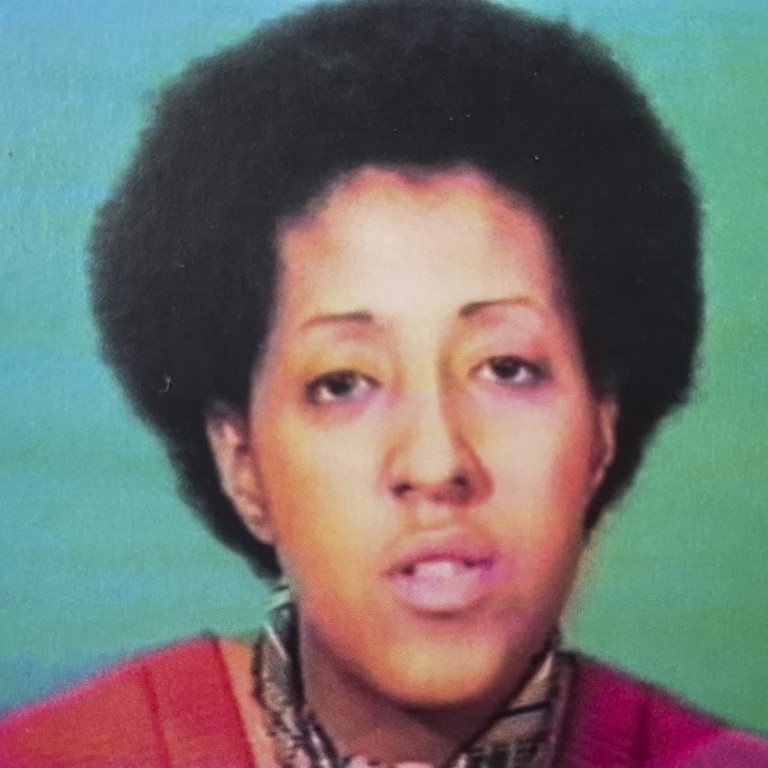
Free, White and 21 (1980) video still
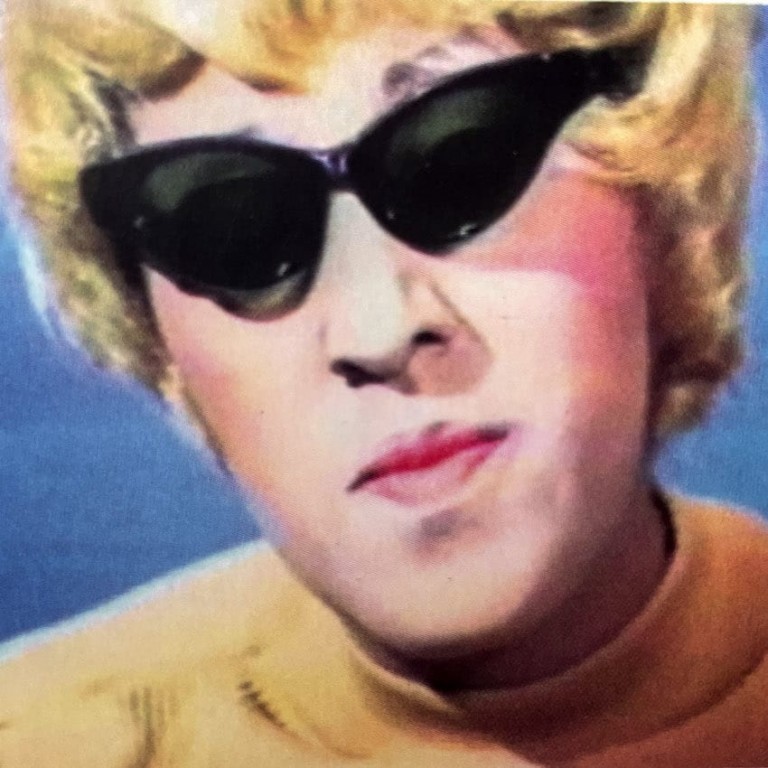
Free, White and 21 (1980) video still
In this short video, Pindell plays both herself and, wearing a blond wig and make-up, a dismissive white counterpart. Pindell describes a catalogue of life experiences shaped by racism, from kindergarten and high school to the hundreds of job rejections and the awkward social situations. Her white counterpart interjecting with “You know, you must be paranoid. Those things never happened to me. I don’t know anyone who’s had those things happen to them” or “You ungrateful little….. after all we’ve done for you”.
The striking familiarity of the exchange is depressing. The undermining and belittling of the black experience is a frequent occurrence today, despite, or should I say in response to, the Black Lives Matter movement.
‘Separate but Equal Genocide – AIDS’ (1991 – 1992)
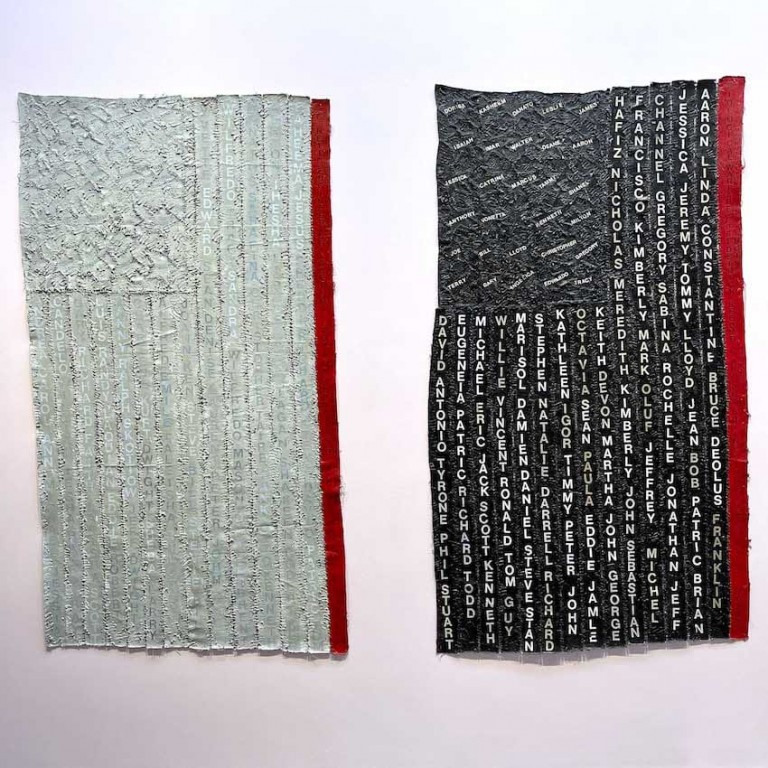
Separate but Equal Genocide – AIDS (1991 – 1992)
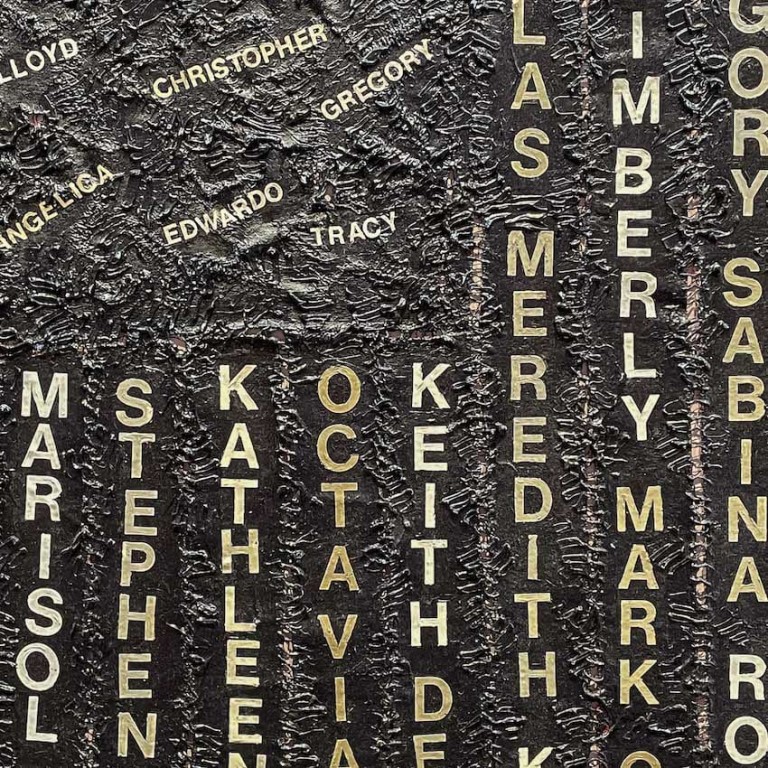
Separate but Equal Genocide – AIDS (1991 – 1992) detail
Grappling with the magnitude of the AIDS crisis, Pindell manages to present the viewer with largely forgotten/unknown events. Her cousin looked white to some people and black to others. It was observed that the medical treatment he received was dependent on how health professionals saw him. The black and white American flags highlighting this inequality. The names include those known to Pindell, but also of many children who died of AIDS, contracted through blood transfusions and in utero.
‘God’s vengeance on the promiscuous and sinful homosexual’ and ‘The disease originating from apes in Africa’ both views used by conservative and racist forces to demonise and scapegoat minority groups in our society.
‘Columbus’ (2020)
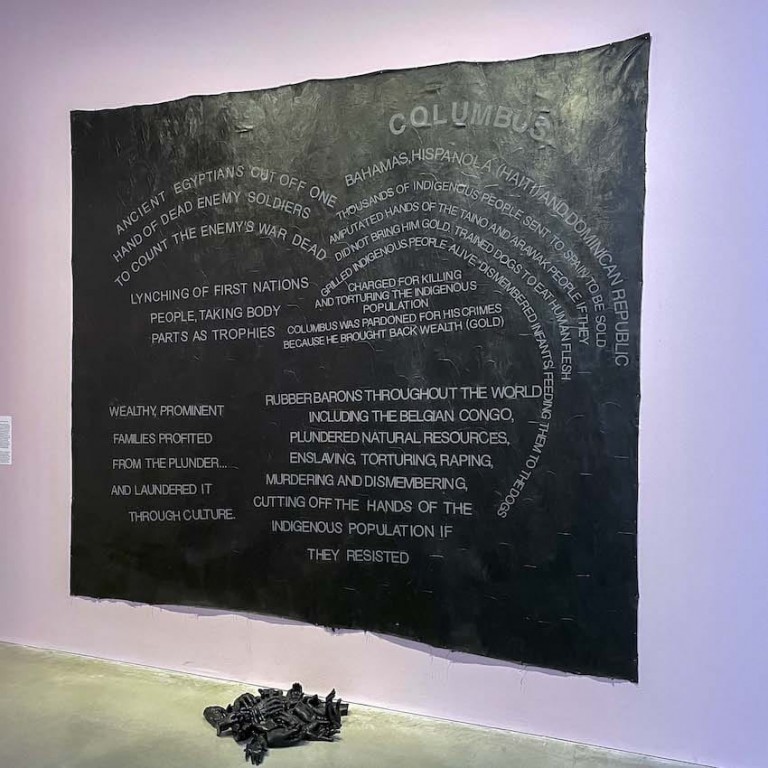
Columbus (2020)
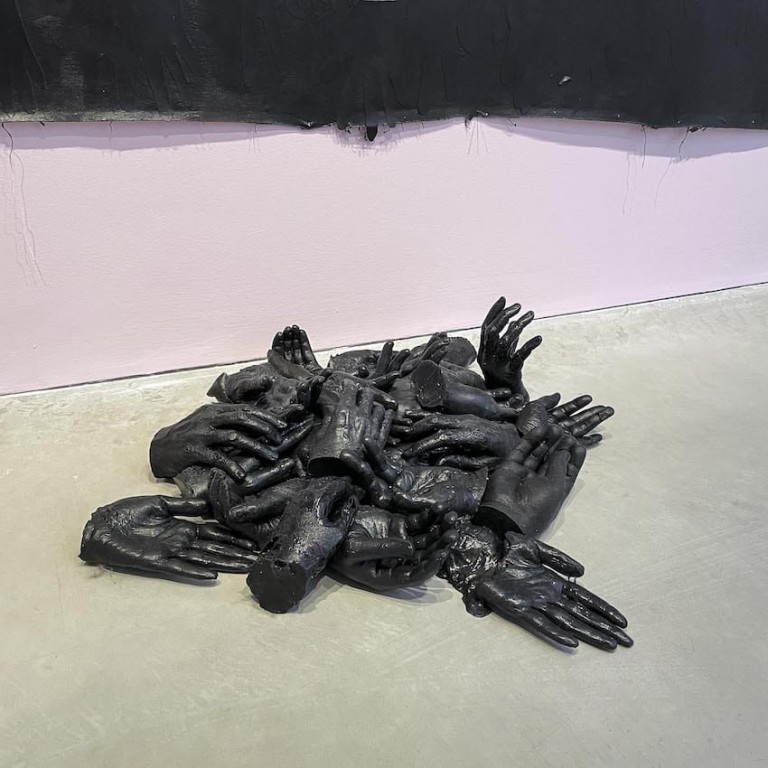
Columbus (2020) detail
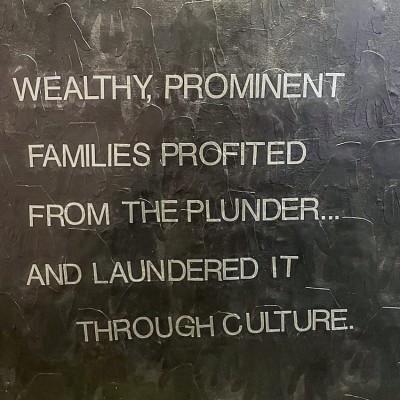
Columbus (2020) detail
Columbus is a searing indictment on slavery, colonialism and the wealth it created.
From Columbus’ genocidal treatment of indigenous people, forgiven, as it delivered gold as its fruit, to the mutilations of the First Nation people and the raping of colonial land, this work leaves the viewer in no doubt as to the horrors of the past. The pile of amputated hands a reminder, should one be needed, that it wasn’t just the land that was literally carved up.
Pindell is however aware that criticism of the barbaric treatment of indigenous peoples is a safe vein to exploit. What she also highlights though are the benefits to the art world still being enjoyed from that wealth creation. The laundering of that plunder through culture.
‘Diallo’ (2000)
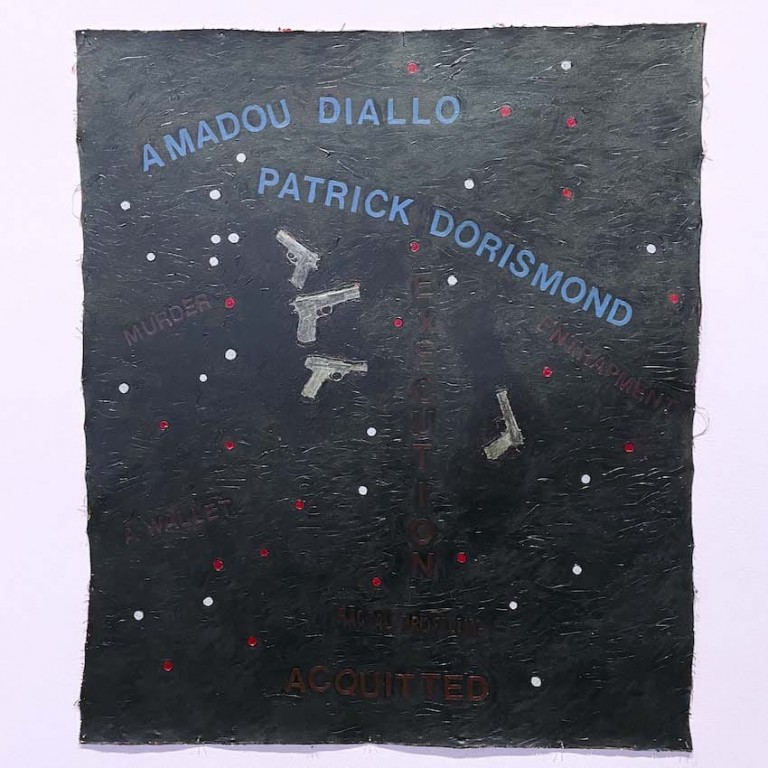
Diallo (2000)
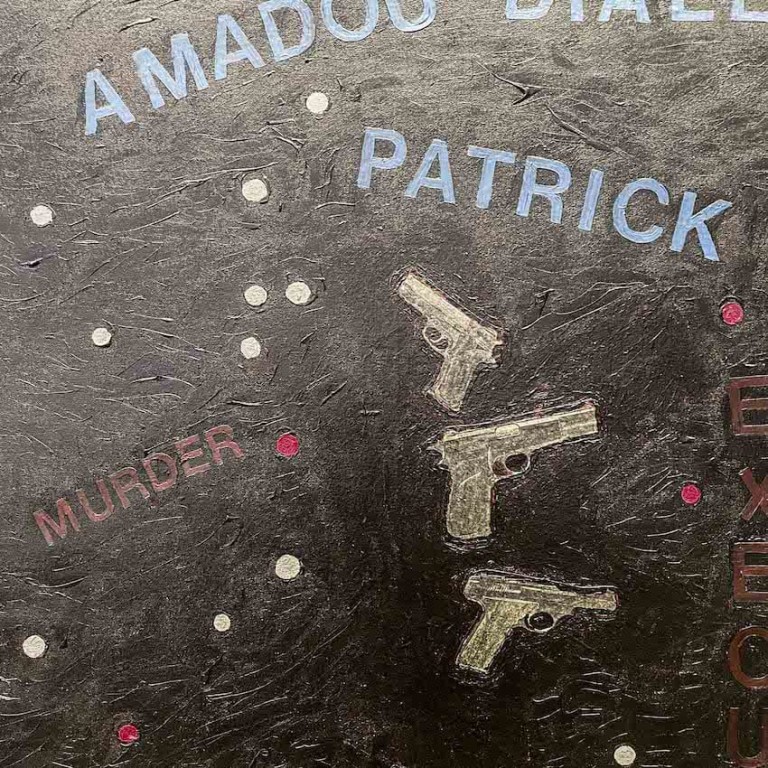
Diallo (2000) detail
Can reaching for your keys be the last action you take? That’s what happened to Amadou Diallo an immigrant from Guinea gunned down by four police officers in New York in 1999. Patrick Dorismond a security guard wrongly caught up in an entrapment sting, which used racial profiling to target suspects. This piece depicts the ongoing slaughter of unarmed black men, because they are black. Diallo was shot at 41 times, 19 bullets, shown in red, hit him. All four officers were acquitted. Although this work was created in 2000, the number of black males being shot/killed for being black continues to grow.
‘Ah, but what about Black on Black violence’? The voices of those wishing to divert attention from an uncomfortable truth.
The truth is that when a Black kills another Black, it is not because of the colour of their skin.
‘Rope / Fire / Water’ (2020)
Pindell had wanted to tackle the subject of lynchings since the 1970s, but it took the Black Lives Matter movement to make the subject matter ‘relevant’ to the art world.
The ability and willingness of humans to inflict horrors on fellow humans is here for all to see. A near unbearable watch and listen. Pindell’s narration is crucial to the video’s impact. With a sparseness of tone, Pindell recounts violent act after violent act. The accompanying tick of a metronome serving both to mark time and focus the attention. For much of the time the screen is black thereby accentuating the spoken word. Some names like Emmett Till are better known, but so many others are not. The African American towns of Rosewood and Tulsa, both destroyed by white mobs are also remembered.
What the film does is give a context to how America came to be what it is today. A country born from the blood of the First Nation peoples, enriched with the blood of slavery and still now unable to loosen its grip on the notion of white supremacy.
Ending with Rope/Fire/Water, I left the exhibition in stunned silence.
If it wasn’t so traumatic, it should be compulsory viewing.
Pindell has relentlessly shone a light on the injustices and racism experienced by African Americans. As a white person I am thankful that, after centuries of suffering, all they are demanding is equality.